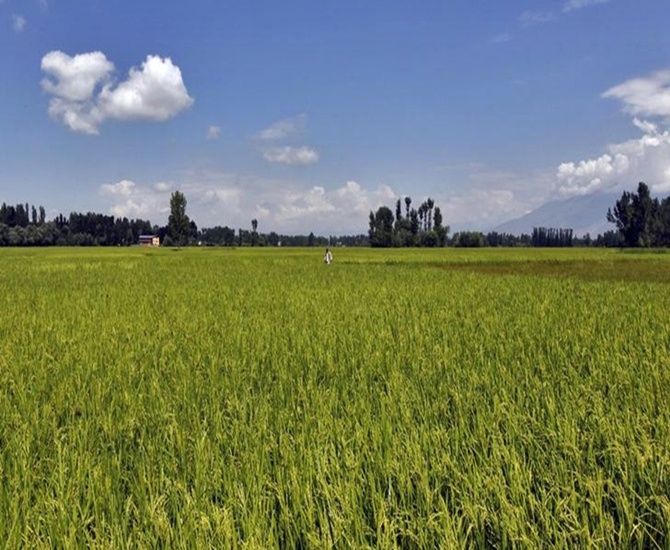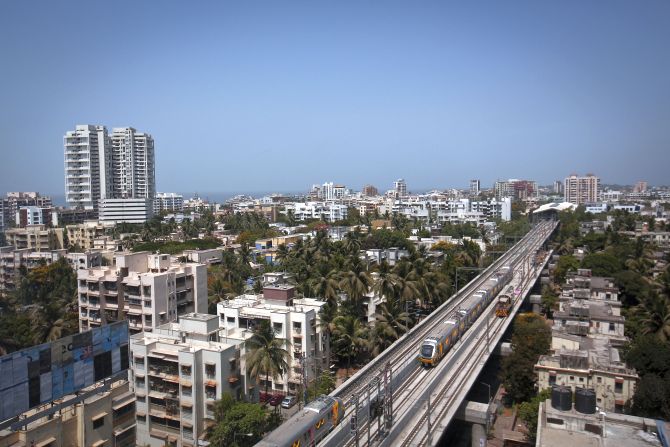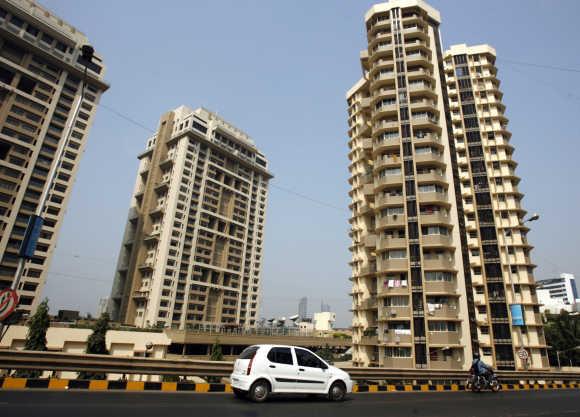 | « Back to article | Print this article |
4 reforms that can solve India's land woes
India needs to do away with income tax concessions that encourage purchase of housing, say Devesh Kapur and T V Somanathan and Arvind Subramanian.
How can India reduce the severe distortions in land regulation and acquisition to ensure that land facilitates rather than impedes development? We propose four policy reforms.
Obtaining approvals for land-use change is a major source of corruption. The government must, therefore, legislate to automatically allow non-irrigated agricultural land to be used for industrial purposes, subject only to obtaining environmental clearances.
This could be achieved by introducing a new "general purpose" classification, which would provide that all dry land not currently classified as industrial, commercial, etc, will be deemed "general purpose".
This action alone could sharply increase the supply of land for industrial purposes and stymie a key avenue of corruption, especially on the outskirts of cities.
Part 1: India's biggest problem: Scarcity of land
Please click NEXT to read more…
4 reforms that can solve India's land woes
A second policy change relates to the artificial scarcity created by floor space index (FSI) limits, which effectively determine the height of urban construction.
Seeking approval for relaxations of the FSI limits are, like those for land-use changes, a major source of corruption.
The romantic aversion to high-rise concrete jungles that drove this policy was flawed and has long been overtaken by its adverse consequences, and by the imperatives and desirability of urbanisation.
Our proposal would be to eliminate the approval for relaxing the FSI to create something like a "choose your FSI" policy.
Each builder or occupant could choose his/her FSI with an important rider. The FSIs beyond the current limits would have to be paid for, to reflect the marginal cost of providing infrastructure for such urbanisation.
Cities can calculate the "long-run marginal cost" of additional sewage, water, electricity and other infrastructure per additional square foot deducting the long-run marginal savings in transport infrastructure costs (denser cities require less transport).
This calculation is feasible, albeit not easy - but, in this case, unobtainable precision should not come in the way of workable approximation.
The planning authority would then distribute these funds to the utilities in proportion to their financing needs. All of this has to be transparently accessible to any citizen. The merit of this proposal is to remove government discretion in granting approval but also to raise money for urban infrastructure development.
Please click NEXT to read more…
4 reforms that can solve India's land woes
Third, India needs to do away with income tax concessions that encourage purchase of housing (which were further increased in the latest Budget through a higher deduction for interest on home loans).
Effectively, the current tax law gives an incentive to buy land (and use scarce river sand) in a country with inflated land prices.
For example, there is now believed to be over 40 per cent vacancy in the already constructed flats in the information technology corridor of Chennai - but new employees continue buying flats, because interest and principal are tax-deductible, while rents are not.
The economic case for encouraging home ownership is no more valid than for encouraging car ownership or share ownership. Citizens should be encouraged to make their own "rent vs buy" housing and investment decisions, and public policy should distort those decisions as little. This fiscal distortion is favoured by powerful lobbies from banks to construction magnates.
Please click NEXT to read more…
4 reforms that can solve India's land woes
Finally, India needs to improve and enforce urban property taxation and ensure that property values are updated periodically.
There are many reasons to increase property taxes from their derisory current levels: it would be a progressive tax; it would foster democratic accountability and more effective decentralisation; it would raise resources for urban infrastructure; it is imposed on a non-mobile good, which can with today's technologies be relatively easily identified and mapped; it is also a tax imposed on a good (property) whose values can only increase, and, therefore, has in-built tax buoyancy; and, finally, just as a financial transaction tax would put sand in the wheels of finance, it would do the same for property speculation. In today's India, there are few tax proposals that are as compelling.
But the key question that poses itself is whether these reforms are politically feasible. Clearly, all status quo decisions have a rationale, and the fact that this has been the situation for decades suggests strong interests favouring it.
Our proposals fall into two categories: those within the purview of the Centre (removing income tax concessions), and those controlled by the states and/or local bodies (changing land-use requirements and the FSI approvals, and increasing/imposing property taxes).
Income taxes are a central subject. The new government can, therefore, on its own, eliminate the income tax concession for housing. It will have to take on the vested interests described above.
One way to implement this policy would be to make the tax changes prospective, to soften their opposition. And, if accompanied by a commensurate increase in the overall deduction for savings, it can also minimise the opposition from middle-class taxpayers.
Please click NEXT to read more…
4 reforms that can solve India's land woes
Another action that the Centre can take, since it controls wealth taxes, is to place ceilings on the current very generous wealth tax exemptions for residential property (one piece of property is exempt irrespective of value).
Our other proposals will encounter greater difficulty both because vested interests will be against them (political and bureaucratic, as well as the politically connected builder lobby) and because the Centre does not control the underlying policy instruments. So how will change happen?
One scenario involves a handful of strong state leaders and/or bureaucrats taking the initiative to implement change. Assisted by technology to improve methods of land valuation, assessment and collection, a few successes can be achieved. And these successes can travel to other parts of India. But this is a process of exogenous and probably slow change.
The Centre can play a role in providing incentives for such change mostly by granting or withholding fiscal transfers - under the centrally sponsored schemes - conditional on states simplifying land-use and the FSI rules and on urban local bodies imposing property taxes along the lines we have proposed.
The Finance Commission could also play a role given its influence in determining Centre-to-state transfers. (In a recent article, two of us elaborated on this idea: http://piie.com/publications/opeds/oped.cfm?ResearchID=2568.)
In India, land's life-giving, mothering and nurturing qualities are evoked in the common and popular image of Dharthi Mata (Hindi for Mother Earth). But there can be a Mata only if there is some Dharthi in the first place. Creating bountiful dharthi is a major challenge ahead.
Devesh Kapur is director of the Centre for the Advanced Study of India at the University of Pennsylvania; T V Somanathan is a member of the IAS; and Arvind Subramanian is a senior fellow at the Peterson Institute for International Economics and Centre for Global Development. These views are their own.





